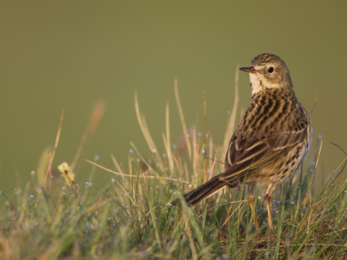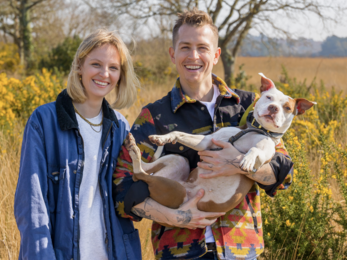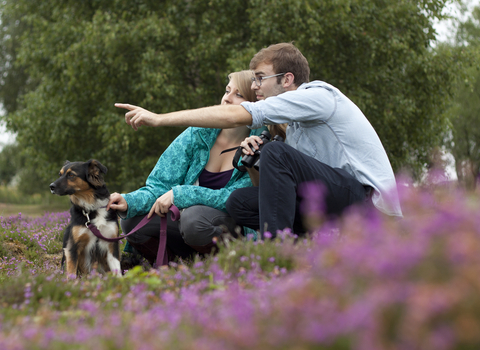The celebrated song of the skylark and bubbling call of curlew are evocative and welcome sounds of spring. Birds like these – whose numbers are in worrying decline – make their fragile nests on the ground, tucked away safely in long grass. However, an exuberant or inquisitive dog, wandering or bounding through grass can all too easily disturb wildlife possibly trampling eggs or scaring adult birds off nests; vulnerable chicks can quickly perish if left alone for too long.
The Wildlife Trusts are calling on dog walkers to keep their dogs on short leads to help ground-nesting birds this spring and summer. Whether visiting local nature reserves, fields, urban parks or further afield at a beach, there are birds nesting on the ground – or just above it – that can be hard to see and are at risk of trampling, disturbance, and harm.
Matthew Jackson, Conservation Director says: “Allowing dogs to run wild in nature reserves can be devastating for wildlife, particularly in spring when species are breeding and vulnerable. We’re asking dog walkers to be sensitive by keeping their animals on short leads, sticking to paths, and properly disposing of dog poo. Wildlife is already under enormous pressure – let's all keep dogs in check so as not to make things worse.”
James Brittain-McVey, lead guitarist of The Vamps, dog owner and ambassador for The Wildlife Trusts says: “I’ve learnt, as a rescue dog owner, the importance of keeping your dog under control at all times. And at this time of year, it’s especially important to remember that we can all play our part in helping birds breed successfully by keeping dogs on short leads in wild places – especially when so many species are having such a hard time.”
Many people think of nests as being high in trees, but a surprising number nest on the ground or just above in low bushes. For example:
-
Nightjars lay their eggs directly onto the ground in heathlands
-
Willow warblers tuck themselves away at the base of trees and bushes in woods and open areas with scattered trees
-
Meadow pipits hide their eggs in grassy tussocks on commons and meadows
-
Familiar garden birds like dunnocks and blackbirds can nest close to the ground.
-
Oystercatcher, ringed plover and little tern eggs and chicks are brilliantly camouflaged making them easy to disturb.
Keeping dogs on short leads will benefit other wildlife that can be harmed or disturbed by enthusiastic pooches – from snakes to seals and amphibians to mammals. Dogs often disturb seals at the coast if off lead and many Wildlife Trusts annually experience problems with dogs chasing grazing livestock.
The law states that you must keep your dog on a lead no longer than 2 metres between 1 March and 31 July, when on any open access land to protect ground-nesting birds. For safety, always keep dogs on a lead around grazing animals.
Other benefits of keeping dogs on leads include:
-
Lessening the negative impacts of dog poo and urine by reducing it to a smaller area
-
Preventing dogs jumping in lakes and rivers – this disturbs aquatic wildlife and the insecticides that are found in dog flea treatments can end up polluting water
-
Reducing risks to other animals and people



